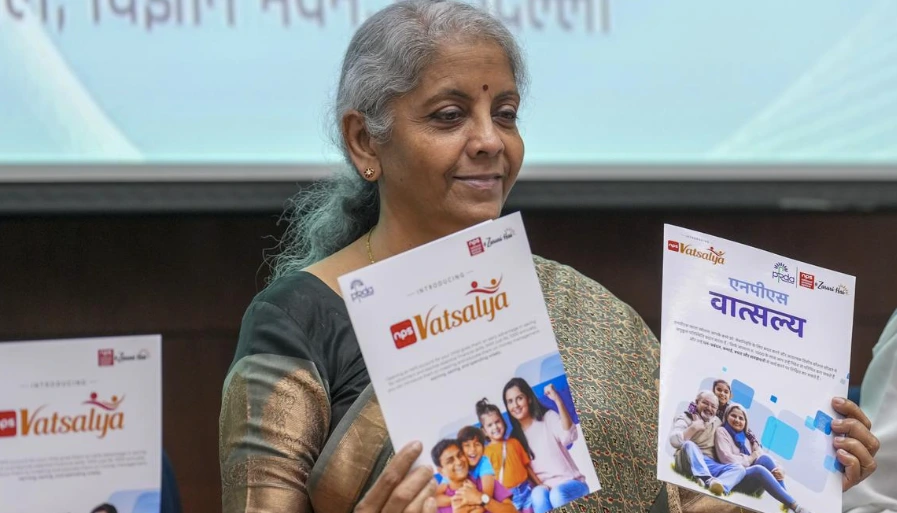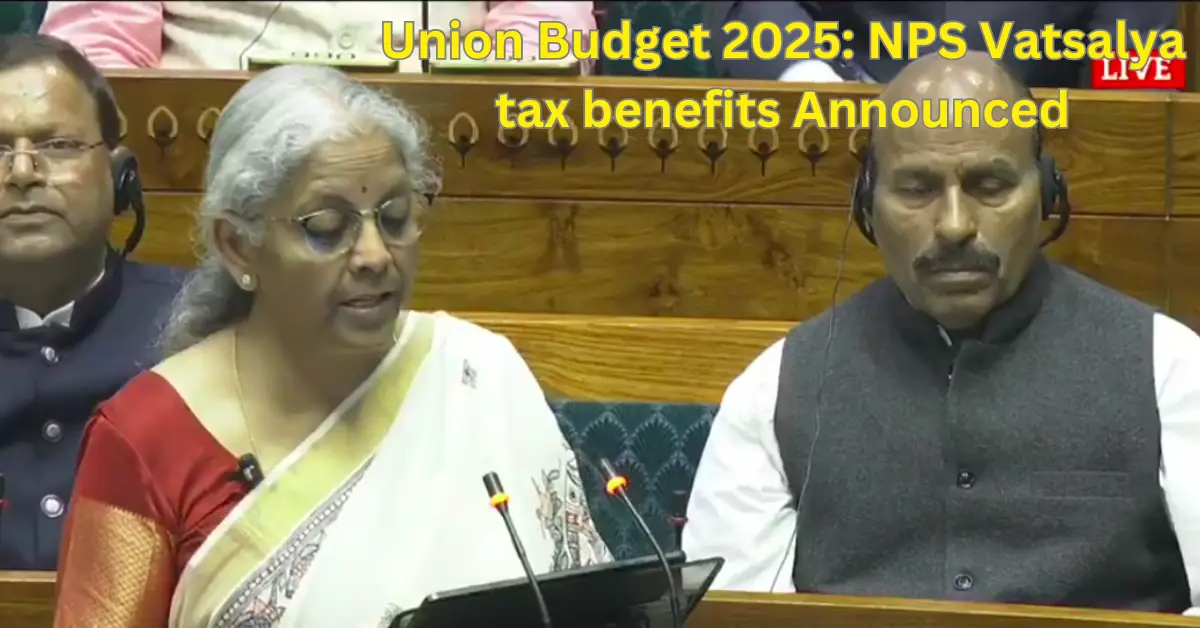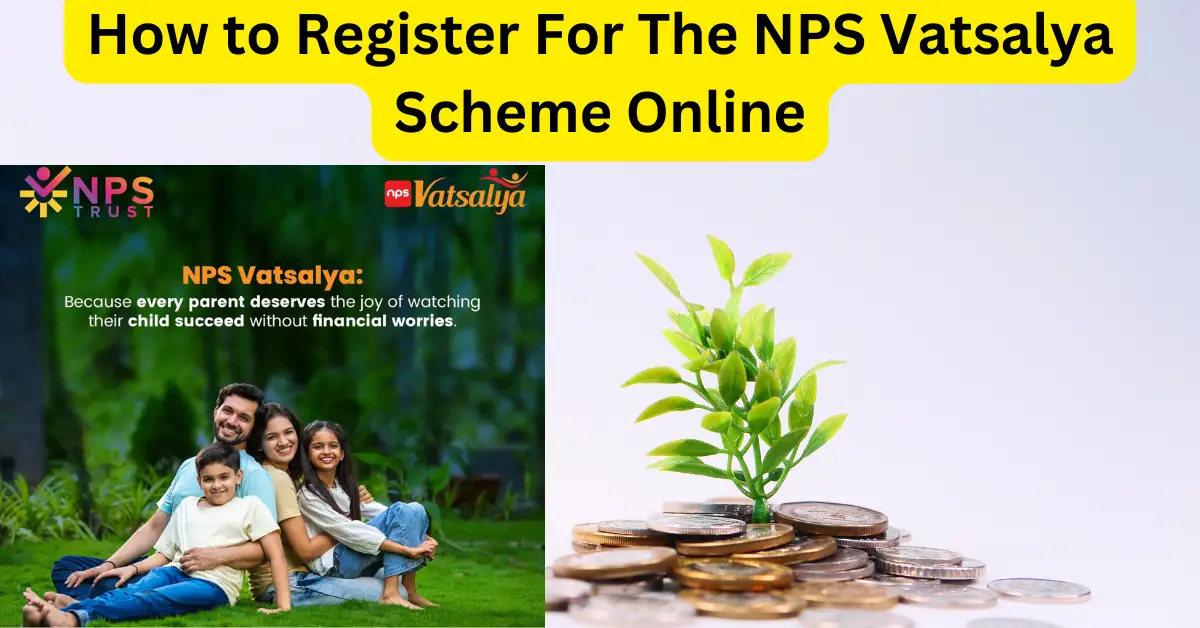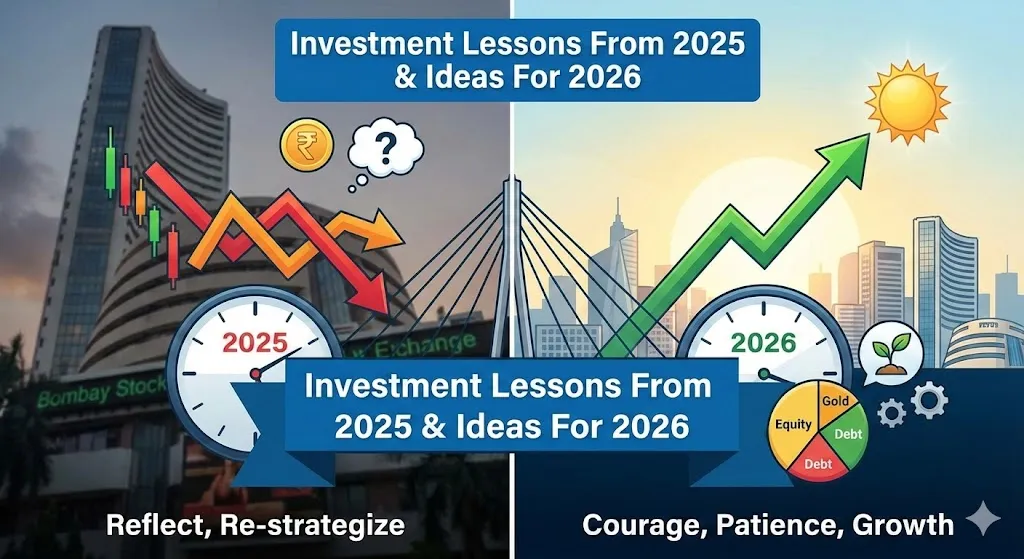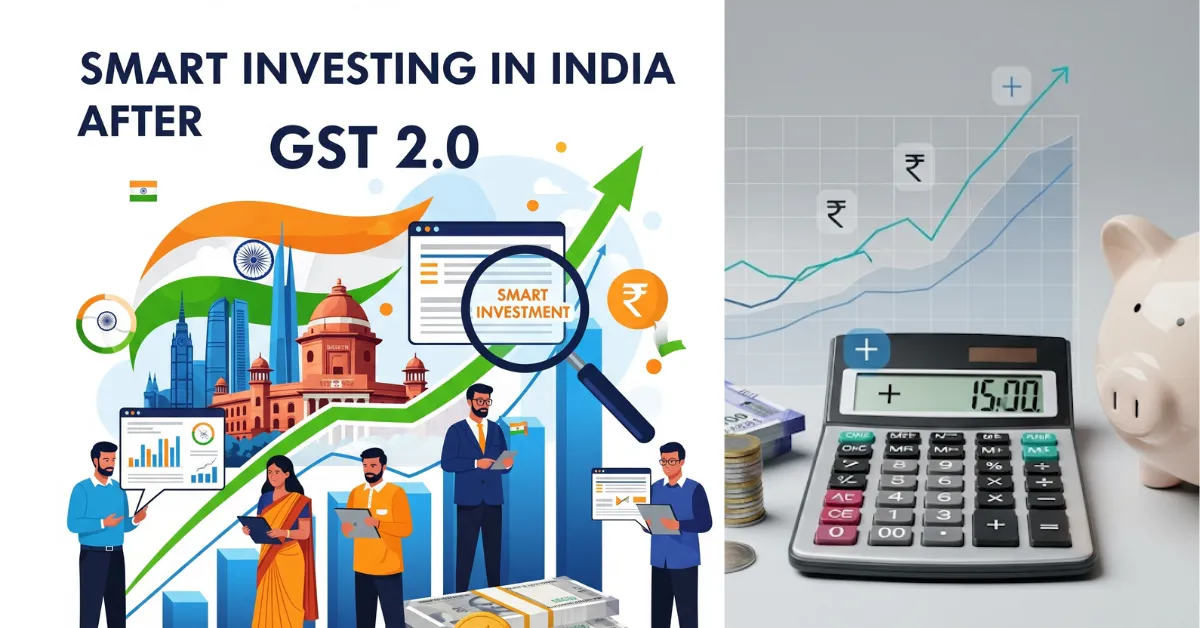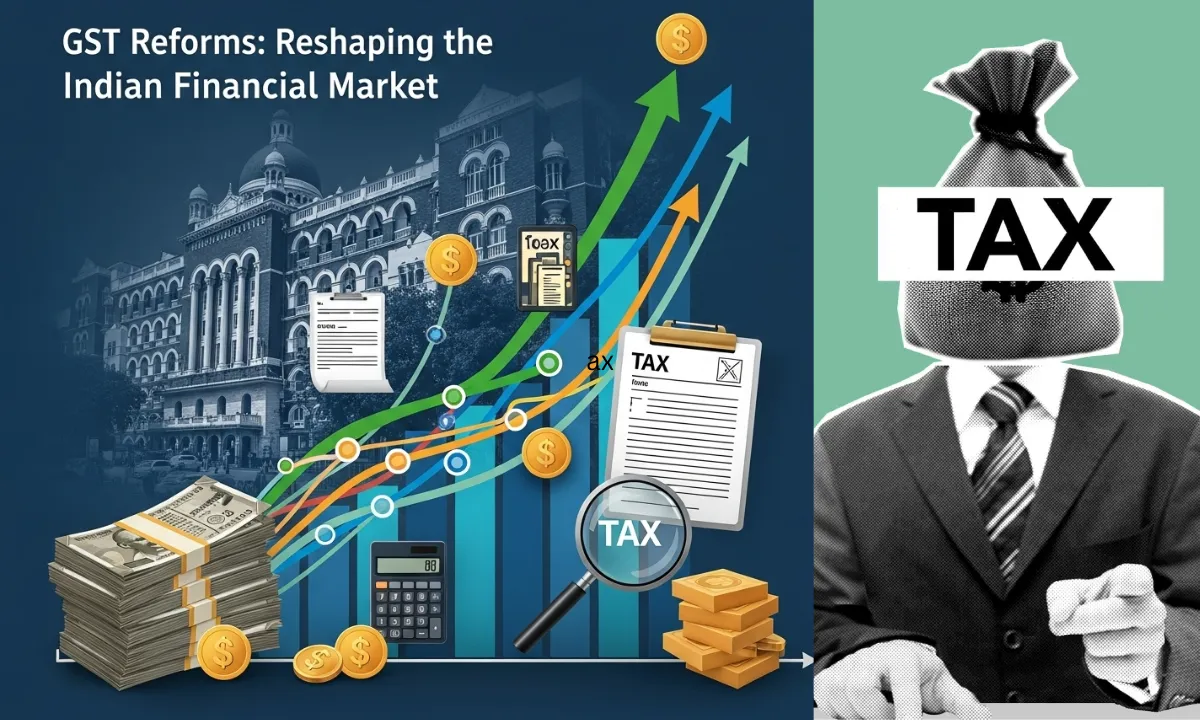NPS Vatsalya Withdrawal Rules: The NPS Vatsalya Scheme is a specially designed financial product to secure the future of minors, primarily aimed at creating a retirement corpus while fostering early saving habits. In the Indian financial landscape, where long-term financial planning is gaining momentum, the NPS Vatsalya Scheme stands out as an essential tool for parents who wish to ensure their child’s financial security. One of the key features of this scheme is its withdrawal rules, which provide flexibility while maintaining a structured approach to long-term investments.
Understanding NPS Vatsalya: A Pillar of Financial Security
The NPS Vatsalya Scheme, launched by the Government of India, allows parents or guardians to open an account in the name of a minor child. While its primary objective is to help parents plan for their child’s retirement, it also supports financial needs during the child’s growing years through partial withdrawals.
Why Choose NPS Vatsalya?
- Long-term financial security: With an NPS Vatsalya account, you ensure your child starts early in saving for retirement.
- Tax benefits: While contributions to NPS Vatsalya are tax-deductible, withdrawal rules also offer flexibility, especially during emergencies like medical treatment or education.
- Partial withdrawals: The scheme permits withdrawals before the child reaches 18 years, for specific purposes, offering liquidity when needed.
Read More:NPS Vatsalya Tax Benefits: Securing Your Child’s Future with Tax Savings
Now, let’s delve deeper into the withdrawal rules that govern the scheme.
NPS Vatsalya Withdrawal Rules
Parents or guardians can make partial withdrawals from the NPS Vatsalya account under the following conditions:
- Eligibility for withdrawal: After 3 years of account activation, parents or guardians can withdraw up to 25% of the contributed amount.
- Purpose of withdrawal: Withdrawals are permitted for education, treatment of specified illnesses, or if the child suffers from a disability greater than 75%.
- Frequency of withdrawals: Partial withdrawals are allowed 3 times before the child reaches 18 years of age.
This feature ensures that while the primary objective of the scheme remains intact—saving for the child’s future—immediate financial needs are not overlooked.
Try This: NPS Vatsalya Calculator
Expert Opinion: Financial advisors often recommend NPS Vatsalya as a balanced investment option for families. According to Shree Desai, a financial consultant, “NPS Vatsalya allows for disciplined, long-term saving, while still offering flexibility to meet urgent financial needs, making it an excellent choice for future planning.”
NPS Vatsalya Exit Rules: Options When the Child Turns 18
Once the child attains 18 years of age, the NPS Vatsalya Scheme offers two primary options:
- Convert to a Regular NPS Account:
- The child can transition the NPS Vatsalya account to a standard NPS account, continuing the journey toward building a retirement corpus.
- The child must complete a fresh KYC within 3 months of turning 18.
- The accumulated corpus in the NPS Vatsalya account will be transferred to the new NPS account.
- Exit the Scheme:
- At least 80% of the accumulated corpus must be reinvested into an annuity plan, ensuring a steady stream of income in the future.
- The remaining 20% can be withdrawn as a lump sum.
However, if the accumulated corpus is less than ₹2.5 lakh, the child can withdraw the entire amount as a lump sum. This ensures flexibility without compromising the core benefit of long-term savings.
Read More: NPS VATSALYA LAUNCHED: Your Child’s Financial Future Starts Today
NPS Vatsalya and Unfortunate Circumstances: Withdrawal Rules for Unforeseen Events
In unfortunate situations like the death of the subscriber (child) or the guardian, specific NPS Vatsalya Withdrawal Rules apply:
- Death of the child (subscriber): The entire accumulated corpus will be returned to the guardian or the nominee.
- Death of the guardian: Another guardian can be appointed after completing a fresh KYC process, ensuring continuity of the scheme.
- Death of both parents: The legal guardian can take over the account without the obligation of further contributions until the child reaches 18.
These NPS Vatsalya Withdrawal Rules provide a safety net for families, ensuring that the child’s financial future remains secure even in the face of unexpected tragedies.
Try This: SSY CALCULATOR
Benefits of the NPS Vatsalya Scheme: A Foundation for Lifelong Financial Security
The withdrawal and exit rules of the NPS Vatsalya Scheme are designed to balance long-term savings with short-term flexibility. Here’s why NPS Vatsalya stands out:
- Retirement-focused planning: While mutual funds may offer better returns for short-term goals like education, NPS Vatsalya ensures that funds are locked in until retirement age, fostering long-term financial growth.
- Financial discipline: By limiting access to funds for non-essential purposes, NPS Vatsalya encourages parents to prioritize future planning over immediate gratification.
- High returns with security: Although the equity component is capped at 75%, the scheme provides the potential for significant returns over time.
Read More: All About NPS Vatsalya: A Secure Future for Your Child’s Financial Well-Being
Closing Thoughts: Why NPS Vatsalya Is a Smart Choice for Your Child’s Future
In today’s volatile financial market, NPS Vatsalya offers a reliable, long-term solution to secure your child’s financial future. With clear NPS Vatsalya Withdrawal Rules that accommodate both emergency needs and long-term savings, the scheme strikes the perfect balance between flexibility and security.
As a parent or guardian, your child’s financial future is in your hands. By investing in NPS Vatsalya, you ensure not only a solid retirement corpus but also a pathway to teaching your child the value of early savings and disciplined financial management.

FAQs on NPS Vatsalya Withdrawal Rules
What is the NPS Vatsalya Scheme?
A child-centric investment plan allowing parents to save for their children’s future, such as education, medical needs, or retirement.
Can withdrawals be made before the child turns 18?
Yes, partial withdrawals up to 25% are allowed after three years, up to three times for specific needs like education or critical illness.
What is the withdrawal limit?
Partial withdrawals are capped at 25% of the total contribution, allowed up to three times before the child turns 18.
When can full withdrawal be made?
Full withdrawal is allowed when the child turns 18 or in the case of the subscriber’s death. 80% must be reinvested in an annuity, and 20% can be withdrawn as a lump sum.
Can the entire amount be withdrawn if the corpus is below ₹2.5 lakh?
Yes, if the corpus is less than ₹2.5 lakh, the full amount can be withdrawn as a lump sum without annuity investment.
What happens when the child turns 18?
The account can be converted into a regular NPS account, allowing the child to manage it independently, with a mandatory KYC update.
What happens in case of the child’s death?
The entire corpus is given to the guardian or nominee. If both parents pass away, a legal guardian can manage the account.
How many partial withdrawals are allowed?
Partial withdrawals are limited to three times before the child turns 18.
Are there tax benefits for withdrawals?
Withdrawals for education or medical purposes are generally tax-exempt, but tax benefits may vary based on current laws.
Can the account continue after the child turns 18?
Yes, the account can be converted to a regular NPS account and managed independently by the child.
How to make a partial withdrawal?
Submit a request via the official NPS portal, providing necessary documentation for approval.
Can NRIs or OCIs open an account?
Yes, NRIs and OCIs can open NPS Vatsalya accounts for their children, subject to KYC requirements.
